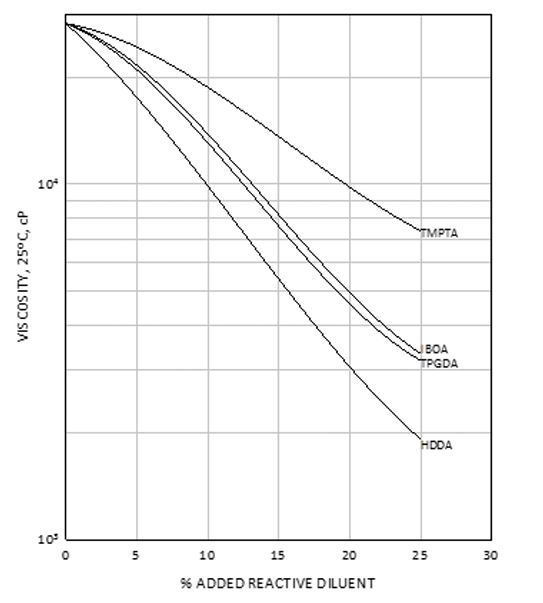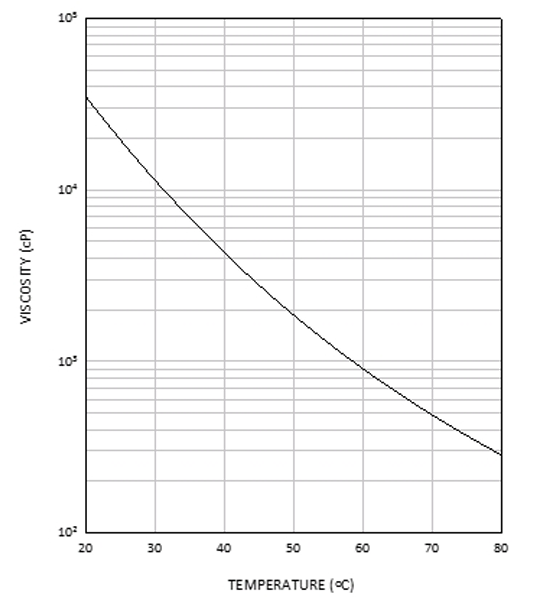Enhanced TDS
Identification & Functionality
- Blend
- No
- CASE Ingredients Functions
- Chemical Family
- Chemical Name
- Country of Origin
- Function
- Binder & Resin, Monomer, Oligomer
- Product Code
- MITM14823
- Single Ingredient
- Yes
- Technologies
- Product Families
Features & Benefits
- CASE Ingredients Features
- Labeling Claims
- Performance Highlights
EBECRYL® 286 is characterized by:
- Light color
UV/EB cured products containing EBECRYL® 286 are characterized by the following performance properties:
- Good flexibility
- Toughness
- Excellent exterior durability
- Non-yellowing
The actual properties of UV/EB cured products also depend on the selection of the other formulation components such as reactive diluents, additives and photo initiators.
Applications & Uses
- Application Method
- Coating End Applications
- Compatible Substrates & Surfaces
- Cure Method
- Markets
- Applications
- Product Applications
Formulated UV/EB curable products containing EBECRYL 286 may be applied via lithographic, screen, gravure, direct or reverse roll, and curtain coating methods.
EBECRYL® 286 is recommended for use in:
- Clear and pigmented coatings for wood, plastics, metal and cork where good exterior durability is required.
Properties
- Physical Form
Technical Details & Test Data
- Viscosity vs % Added Reactive Diluent
EBECRYL® 286 Viscosity Reduction With Reactive Diluents:

Viscosity Reduction:
- Graph shows the viscosity reduction of EBECRYL® 286 with 1,6-hexanediol diacrylate (HDDA), isobornyl acrylate (IBOA), trimethylolpropane triacrylate (TMPTA) and tripropylene glycol diacrylate (TPGDA).
- Although viscosity reduction can be achieved with non-reactive solvents, reactive diluents are preferred because they are essentially 100 percent converted during UV/EB exposure to form a part of the coating, thus reducing solvent emissions.
- The specific reactive diluents used will influence performance properties such as hardness and flexibility.
- Viscosity vs Temperature
EBECRYL® 286 - Viscosity vs. Temperature:

Viscosity Reduction:
- Graph illustrates the change in viscosity of EBECRYL® 286 with increasing temperature.
Principal Information
- Group Principal Number
- S000001
- Principal
Storage & Handling
- Storage Conditions
- Care should be taken not to expose the product to high temperature conditions, direct sunlight, ignition sources, oxidizing agents, alkalis or acids.
- This might cause uncontrollable polymerization of the product with the generation of heat.
- Storage and handling should be in stainless steel, amber glass, amber polyethylene or baked phenolic lined containers.
- Procedures that remove or displace oxygen from the material should be avoided.
- Do not store this material under an oxygen free atmosphere.
- Dry air is recommended to displace material removed from the container.
- Wash thoroughly after handling.
- Keep container tightly closed.
- Use with adequate ventilation.
Other
- Appearance
- Clear liquid
- Appearance (SDS)
- Clear liquid
- Color (SDS)
- Yellowish
- Odor (SDS)
- Acrylate
- Other Hazards
- Polymerization may occur from excessive heat, contamination or exposure to direct sunlight .
- Protect from Freezing
- Yes
- Temperature Control
- Yes
- USA/DOT UN Number
- Not Applicable
- Chemical Properties
Value Units Test Method / Conditions Functionality 2.0 - - Material Composition
Value Units Test Method / Conditions Oligomer Content 75.0 %(W/W) %(W/W) Tripropylene Glycol Diacrylate Content 25.0 %(W/W) %(W/W) - Mechanical Properties
Value Units Test Method / Conditions Elongation at Break 56.0 % % Tensile Strength 6000.0 psi psi - Optical Properties
Value Units Test Method / Conditions Color Scale max. 2.0 Gardner Gardner - Physical Properties
Value Units Test Method / Conditions Density 1.13 g/cm³ g/cm³ at 25°C Glass Transition Temperature (Tg) 42.0 °C °C Storage Temperature 39.2-104.0 °F °F Viscosity 18000.0-28000.0 mPa.s mPa.s at 25°C - SDS Physical and Chemical Properties
Value Units Test Method / Conditions Boiling Point (SDS) min. 100.0 °C °C Density (SDS) 1.13 g/cm³ g/cm³ Flash Point (SDS) min. 100.0 °C °C Vapor Pressure (SDS) max. 1.33 hPa hPa at 20°C Volatile Content (SDS) max. 0.3 %(W/W) %(W/W) - Shelf Life & Stability
Value Units Test Method / Conditions Shelf Life 0.0 d d
